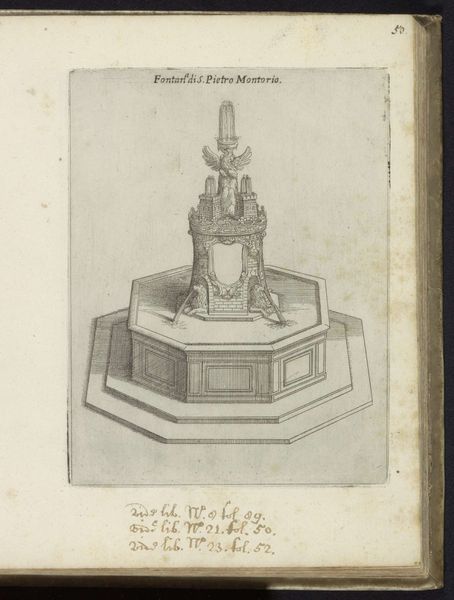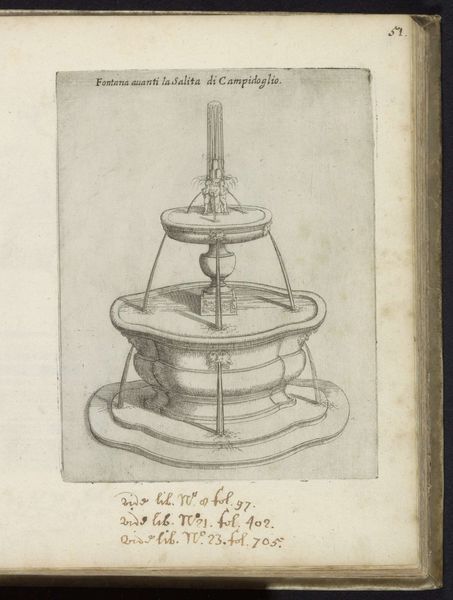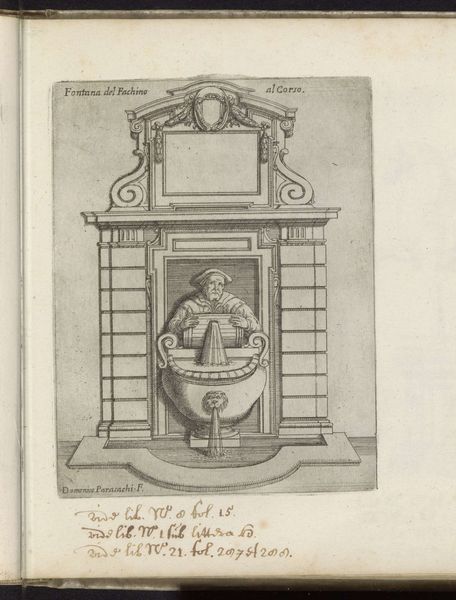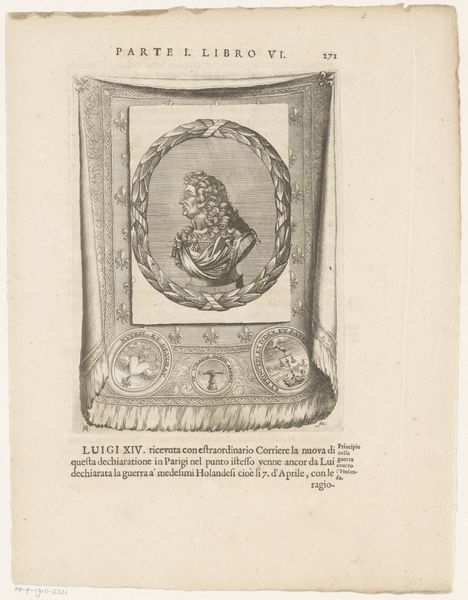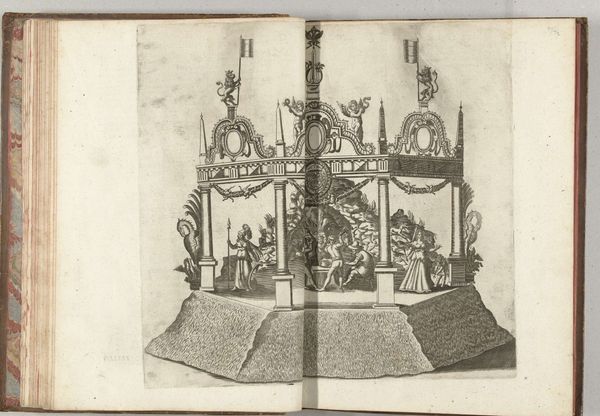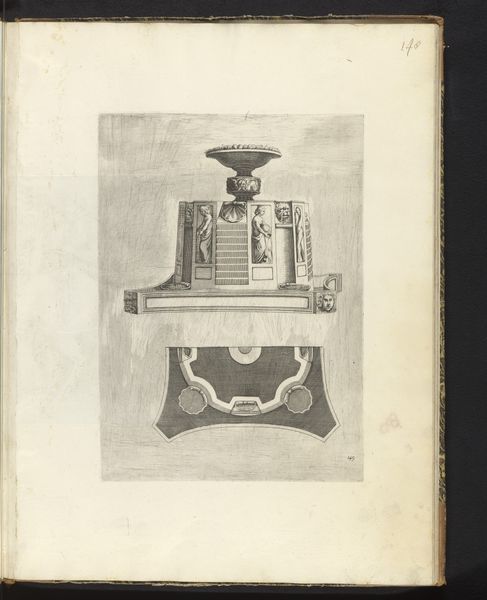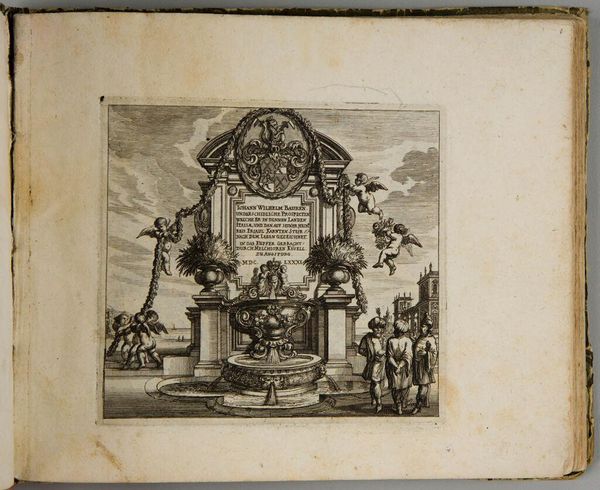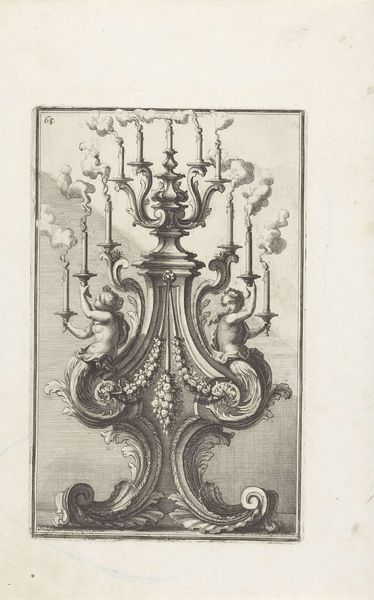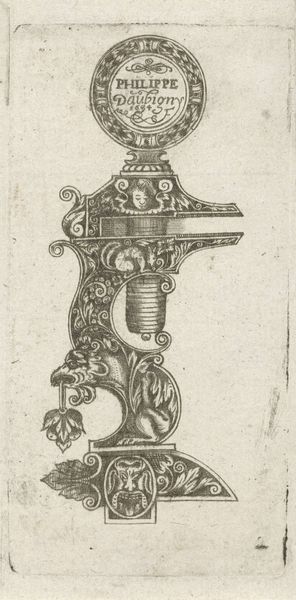
drawing, print, etching, sculpture, engraving, architecture
#
drawing
#
baroque
# print
#
etching
#
form
#
sculpture
#
line
#
cityscape
#
history-painting
#
italian-renaissance
#
engraving
#
architecture
Dimensions: height 192 mm, width 150 mm
Copyright: Rijks Museum: Open Domain
Curator: Here we have Domenico Parasacchi's "Fontana delle Tartarughe te Rome," dating to 1637. This rendering of the Turtle Fountain in Piazza Mattei, Rome, is crafted with etching, engraving, and drawing techniques. Editor: It has an austere grace. The architectural lines feel so deliberate, contained almost. Like a perfectly frozen moment from the Baroque era, emphasizing rational design. Curator: Precisely! The linearity is compelling. Notice how Parasacchi meticulously delineates each structural element: the basin, the supporting figures, the architectural details. The use of line dictates form in such a clean precise fashion. The balance between open space and the density of the engraving creates rhythm across the composition. Editor: Those figures are peculiar—not quite classical nudes, but more stylized forms bearing the bowl aloft, which echoes themes of Atlas and the world, the idea of humanity being supportive. But then we consider that these are youths, rather mature children, maybe referencing Eros in a new light. Are we speaking about fertility and youthful abundance for the community with this public waterworks? Curator: Iconographically rich, of course! From a formalist approach, I read how their bent legs and curved posture enhance the fountain's stability. The contrast in shading also directs focus to key elements like the sculpture's central support. There is no interest here in naturalism. The artist aims to describe form in an elevated way with strategic composition and technical mastery of his craft. Editor: And it brings to mind those powerful symbols. Water is not just H2O; in cultural memory, it represents purification, renewal, cleansing. To offer public art connected with this, to me that is deeply meaningful in this specific rendering of Renaissance ideals. It captures not just beauty but speaks volumes to us, still today. Curator: The stark rendition certainly urges close examination, not just enjoyment but also rigorous looking, demanding our attention through deliberate contrast. Editor: Absolutely. These are historical anchors in public display that ask a great deal more from us, not just a simple aesthetic delight. The image's visual impact is striking, with its symbolic charge resonating across time.
Comments
No comments
Be the first to comment and join the conversation on the ultimate creative platform.
